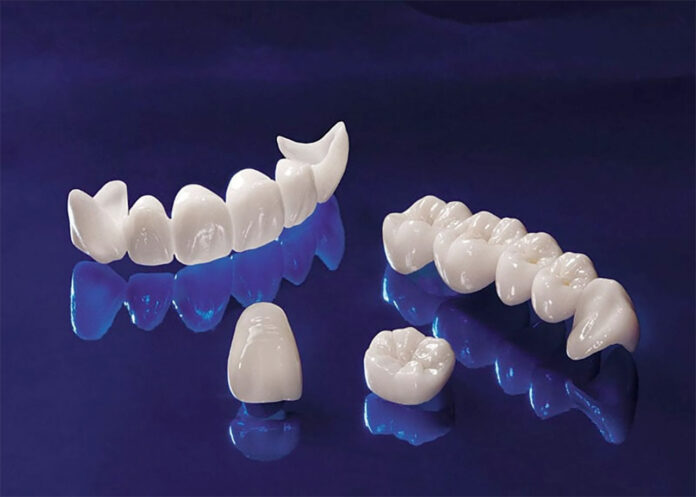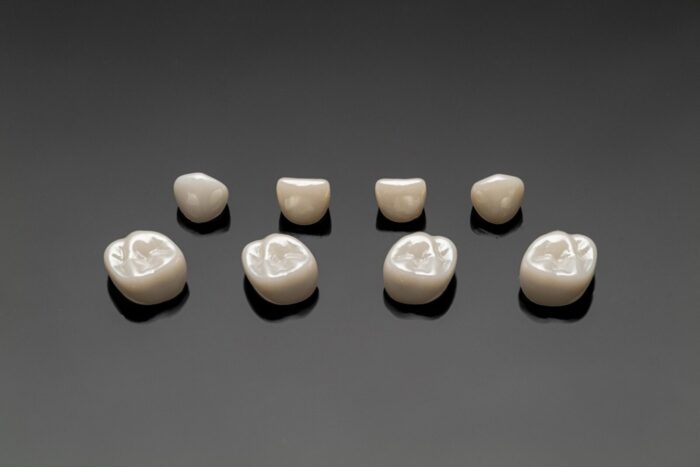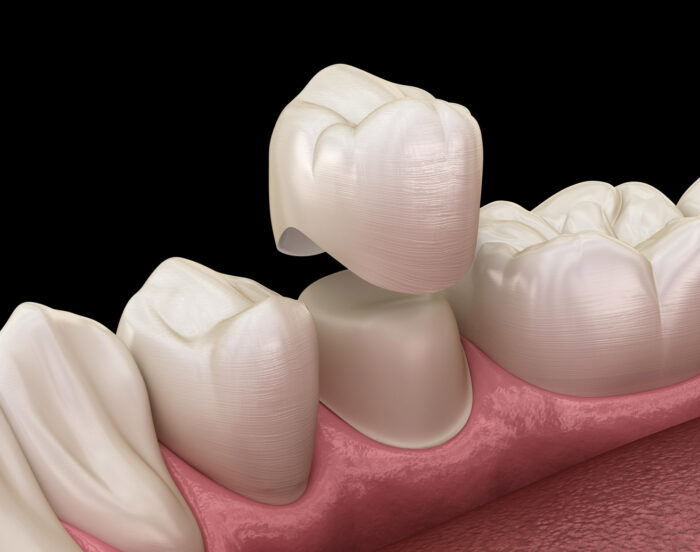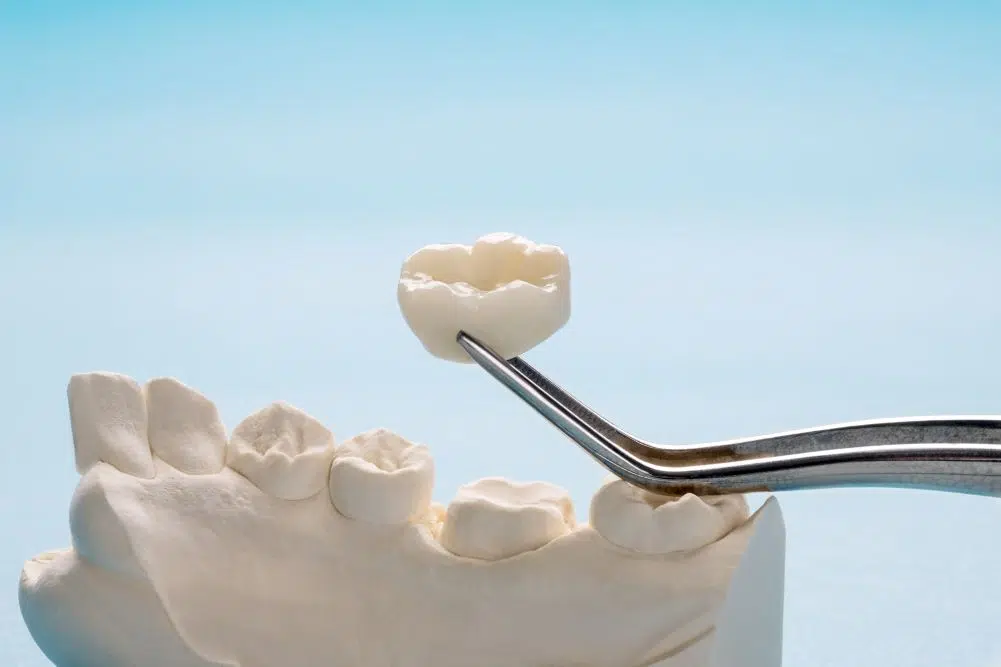
Zirconia crowns have become increasingly popular in modern dentistry due to their durability, biocompatibility, and aesthetic appeal.
Zirconia, a crystalline dioxide of zirconium, stands out in the dental materials landscape for its robustness and biocompatibility. It mimics the translucency of natural teeth, making it a preferred choice for crowns, especially in the visible areas of the mouth.
Its strength and durability surpass that of porcelain and other materials traditionally used in dental restorations, promising longevity and resistance to wear and tear.
Understanding the intricate process behind creating the Zirconia Crown in the Dental Lab on the meticulous craftsmanship involved in restoring smiles. This article delves into the journey from the initial stages to the final result of a flawless zirconia crown.
Designing the Blueprint
The journey commences with the digital capture of the patient’s dental impression. Unlike traditional methods involving messy impressions, digital scanners ensure precision and comfort for the patient.
Once the digital impression is obtained, Computer-Aided Design (CAD) software comes into play. Skilled technicians utilize CAD technology to design a virtual blueprint of the zirconia crown, meticulously considering factors like size, shape, and alignment to ensure a perfect fit and natural appearance.
Precision Milling
After the initial design phase, the meticulously crafted digital blueprint reaches a specialized milling machine. This milling machine, fitted with state-of-the-art Computer-Aided Manufacturing (CAM) technology, transforms the virtual design into a physical form.
Guided by the digital blueprint, the milling machine carves the zirconia crown from a solid block of zirconia material with remarkable precision. This process is not merely mechanical; it’s a dance of technology and craftsmanship, ensuring that every delicate detail of the virtual design is faithfully replicated in the physical form.
Such precision is essential to guarantee a final product that seamlessly integrates into the patient’s smile, both aesthetically and functionally.
Sintering
Following milling, the zirconia crown undergoes a crucial phase called sintering. This involves subjecting the crown too high temperatures in a specialized furnace. The intense heat causes the zirconia particles to bond tightly, producing a remarkably strong and durable final product.
Sintering enhances the crown’s mechanical properties and ensures optimal biocompatibility, which is crucial for long-term oral health.
Shading and Staining
While zirconia is renowned for its strength, its natural appearance may lack natural teeth’ subtle transparency and shading. To address this, skilled technicians employ shading and staining techniques to mimic the nuances of natural tooth coloration.
By carefully layering and blending ceramic stains, they impart a lifelike appearance to the zirconia crown, seamlessly integrating it with the patient’s smile.
Finishing Touches

During the concluding phases of crafting a zirconia crown, meticulous polishing becomes paramount to achieve an impeccable result. Technicians utilize various specialized polishing tools and techniques, carefully refining the surface texture to perfection.
Each stroke of the polishing process enhances the crown’s aesthetic allure and its tactile smoothness, ensuring a seamless fit and a natural sheen that seamlessly blends with adjacent teeth.
This dedication to detail guarantees that the final product meets the highest quality standards and leaves patients with a smile that radiates confidence and beauty.
Quality Assurance
Quality assurance is critical in the zirconia crown creation process, ensuring that each crown meets stringent standards before reaching the dentist’s office. Highly skilled technicians meticulously inspect every crown aspect, leaving no detail unchecked.
They scrutinize for precision, functionality, and aesthetics, aiming to deliver a product that looks stunning and performs flawlessly within the oral cavity. This rigorous evaluation process assures patients that their crown has undergone a thorough examination and meets the highest quality standards.
The Final Fitting
In the culmination of the zirconia crown creation journey, the pivotal moment arrives with its placement within the patient’s mouth. Here, dentists meticulously examine the crown’s fit and alignment, sparing no effort to ensure it seamlessly integrates with the existing dental structure.
Any adjustments for optimal comfort and functionality are made with precision and care. As the crown is securely bonded into its designated position, a transformative moment unfolds, marking the completion of the restoration process.
With the crown in place, the patient is greeted with a revitalized smile, radiating confidence and vitality, symbolizing the culmination of meticulous craftsmanship and dedicated care.
Potential Challenges

1. Precision in Fit and Bite
Achieving a precise fit for zirconia crowns is critical. Even minor discrepancies between the crown and the patient’s tooth can lead to issues such as discomfort, bite misalignment, or the need for additional adjustments. Ensuring the crown fits perfectly within the unique contours of each patient’s mouth is both a technical and artistic endeavor.
2. Color Matching
While zirconia can be colored to match the surrounding teeth, achieving the perfect shade is challenging. Natural teeth have subtle color variations that can be difficult to replicate exactly with zirconia, potentially leading to crowns that are noticeable or aesthetically displeasing.
3. Strength vs. Aesthetics Trade-Off
Zirconia’s strength is unparalleled, but its aesthetic integration can be challenging, especially for front teeth where translucency and the play of light are more noticeable. Finding the right balance between making a crown strong and making it look natural is a significant challenge.
4. Technical and Equipment Limitations
The process of designing and manufacturing zirconia crowns relies heavily on CAD/CAM technology. Any limitations in this technology or the equipment used can affect the final outcome. For instance, outdated software may not capture the nuances of a patient’s dental anatomy, leading to less-than-optimal designs.
5. Biocompatibility Concerns
While zirconia is known for its biocompatibility, there can be instances where patients exhibit reactions to the material. Although rare, such reactions can necessitate the removal of the crown and the selection of a different material, complicating the treatment process.
6. Cost and Accessibility
The cost of zirconia crowns, driven by the technology and materials involved, can be a barrier for some patients. Additionally, not all dental practices have the equipment or expertise to offer zirconia crowns, limiting patient access to this option.

Conclusion
The progression from the initial stages to the final smile reveals the elaborate process of crafting the zirconia crown in the dental lab. Beginning with digital impressions and utilizing CAD/CAM technology, every detail is meticulously captured and translated into a virtual blueprint.
This blueprint guides the precision milling process, where specialized machinery carves the crown from a solid block of zirconia material.
Following milling, the crown undergoes sintering, a high-temperature process that enhances its strength and biocompatibility. Shading and staining techniques are then employed to mimic the natural coloration of teeth, ensuring a seamless integration with the patient’s smile.
Finally, through meticulous polishing and quality assurance measures, dental professionals deliver zirconia crowns that restore oral health and elevate every smile’s aesthetic appeal, combining technological innovation with artistic expertise.
















